Lice
What are they?
Apart from being one of parents’ most dreaded diagnoses, they are mites that cause a harmless, though contagious infestation. Getting lice is totally unrelated to hygiene. Anyone can get them. An adult louse will lay eggs (otherwise known as nits) on the hair shaft very close to the scalp. The eggs will hatch after one week and the nymphs will remain at the base of the hair shaft for about 10 days until they mature into adults. Eggs and nits are attached tightly to the hair shaft and do not move around. Adult lice live for about four weeks, move around, lay eggs, and the cycle repeats.
Signs and Symptoms
A sign of head lice is white dandruff-like material near the scalp and on the hair. The areas where they are most often seen are behind the ears and at the nape of the neck. Nits may look like dandruff but they do not easily slide off of the hair shaft if you try to remove them. You can sometimes see small red bumps on the neck, head or shoulders. If your child has enough lice s/he may have enlarged lymph nodes along the front or back of his/her neck.
Many people have no symptoms at all. Those who have symptoms may have itching of their scalp.
Contagiousness
Lice can live on an object for 1-2 days. They are passed from person to person by contact with either an affected person or object. Lice can move from person to person on combs, brushes, pillows, hats, headbands and hooded jackets.
Treatment
After any treatment you will use a nit-removal comb to clear hair of all nits and lice. It’s a good idea to comb hair with a nit comb every other day for 1-2 weeks after treatment to ensure that the lice and nits are gone for good.
Non-medicinal treatments –
Non-medicinal (and non-toxic) treatments often need to be repeated after 1-2 weeks.
Oil, Mayonnaise, Vaseline:
These can be applied to the hair and scalp at bedtime, covered with a shower cap, and washed off in the morning. They act by suffocating lice and eggs. They are messy, and can be difficult to remove from the hair, but carry no risk of side effects.
Dimethicone Shampoo
Dimethicone works in a way that is similar to Vaseline, oil and mayonnaise. It is not a medication and is easier to remove than the other non-medical treatments, but can sometimes cause irritation of the scalp.
Medicinal treatments
– Over the Counter Medicated Shampoos
o Pyrethrin (Rid) – Do not use if child has plant allergies. Second treatment needed after 1 week. Third treatment may be needed after 3 weeks. Directions: Apply to dry hair. Wait 10 minutes. Add water, massage for 1-2 minutes, rinse out.
o Permethrin 1%(Nix) – Do not use under 2 months of age. Do not use if child has plant allergies. Do not use if pregnant or nursing. Directions: Wash hair normally. Towel dry. Apply Permethrin, let sit for 10 minutes, then rinse. Only one treatment needed.
– Prescription Medications
o Permethrin 5% (Elimite)- Only one treatment needed. Do not use under 2 months of age. Do not use if child has plant allergies. Do not use if pregnant or nursing. Directions: Wash hair normally. Towel dry. Apply Permethrin, let sit for 10 minutes, then rinse. Only one treatment needed.
o Malathion (Ovide) – Not for children under 6 years of age. Do not use if pregnant or nursing. This is a pesticide and is a last resort. Directions are to apply to dry hair, leave on overnight (8-12 hours) and rinse off in the morning. May repeat up to one time only in 1-2 weeks. This product is flammable and should not be used with any heat (hair dryer/flat iron/curling iron). Never apply to face and wash hands thoroughly after using.
o Benzyl Alcohol (Ulesfia) – Not for use under 6 months of age. Apply to scalp and hair. Leave on for 10 minutes then rinse off. Repeat in 1 week. Can cause irritation and possibly numbness over the scalp.
Household Care
- Treat all household contacts who have signs or symptoms of lice, and all people who share a bed with an affected person.
- Disinfect all brushes and combs – use medicated shampoos or soak in hot water (almost boiling) for 10-15 minutes.
- Wash all bedding, stuffed animals, and recently worn clothing, jackets, hats in hot water.
- Vacuum carpets, sofas, bed and pillows.
- Put all items that are not washable, but that have been in close contact with the affected child, in a garbage bag for 10-14 days.
Return to School/Daycare/Playdates
If you have treated your child and combed all nits out of his/her hair then s/he can resume being with children the following day.
Does your child need to see the doctor?
If your child has recurrent lice despite using non-medicinal or over-the-counter medicinal treatments you should call your doctor to discuss your options. A visit to the doctor is rarely necessary.
Remember – you have not done something wrong if your child has lice. You do not get lice from not washing well or showering enough. It just happens. So after you are done shuddering and reflexively scratching your own head, follow the treatment options above and just keep moving forward.
-Monique Araya, MD, FAAP
The medical information on this Web site is provided for educational purposes only. The information provided in this site, or through linkages to other sites, is not a substitute for medical or professional care, and you should not use the information in place of a visit, call consultation or the advice of your physician or other healthcare provider.
If you believe you have a medical emergency you should call 911 or your physician immediately. If you have any questions regarding your health or a medical condition, you should promptly consult your physician.
- Accidental Poisoning
- Bites and Stings
- Burns (and sunburns)
- Childhood Asthma
- Colic and Crying Babies
- Constipation in Children
- Cough & Cold
- Diaper Rash
- Diarrhea
- Ear Pain
- Fever
- Head Trauma and Head Injuries
- Kids and Allergies
- Lice
- Medication Dosages
- Nosebleeds in Children
- Pink Eye and Styes
- Rash
- Scrapes, Cuts and Stitches
- Sudden/Acute Abdominal Pain
- Treating a Common Cold Cough
- Vomiting and Nausea
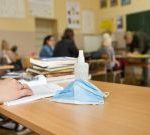 High Viral Loads Make Kids ‘Silent Spreaders’ of COVID-19
High Viral Loads Make Kids ‘Silent Spreaders’ of COVID-19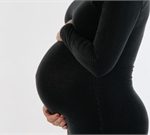 Clotting Tied to COVID-19 May Harm the Placenta
Clotting Tied to COVID-19 May Harm the Placenta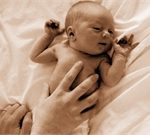 ‘Kangaroo Care’ Has Big Health Benefits For Preemies
‘Kangaroo Care’ Has Big Health Benefits For Preemies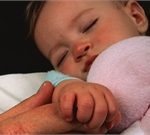 Babies Are Spared Severe COVID-19 Symptoms
Babies Are Spared Severe COVID-19 Symptoms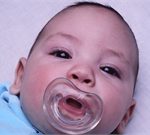 Sleepless Babies May Face Emotional Troubles as Kids
Sleepless Babies May Face Emotional Troubles as Kids